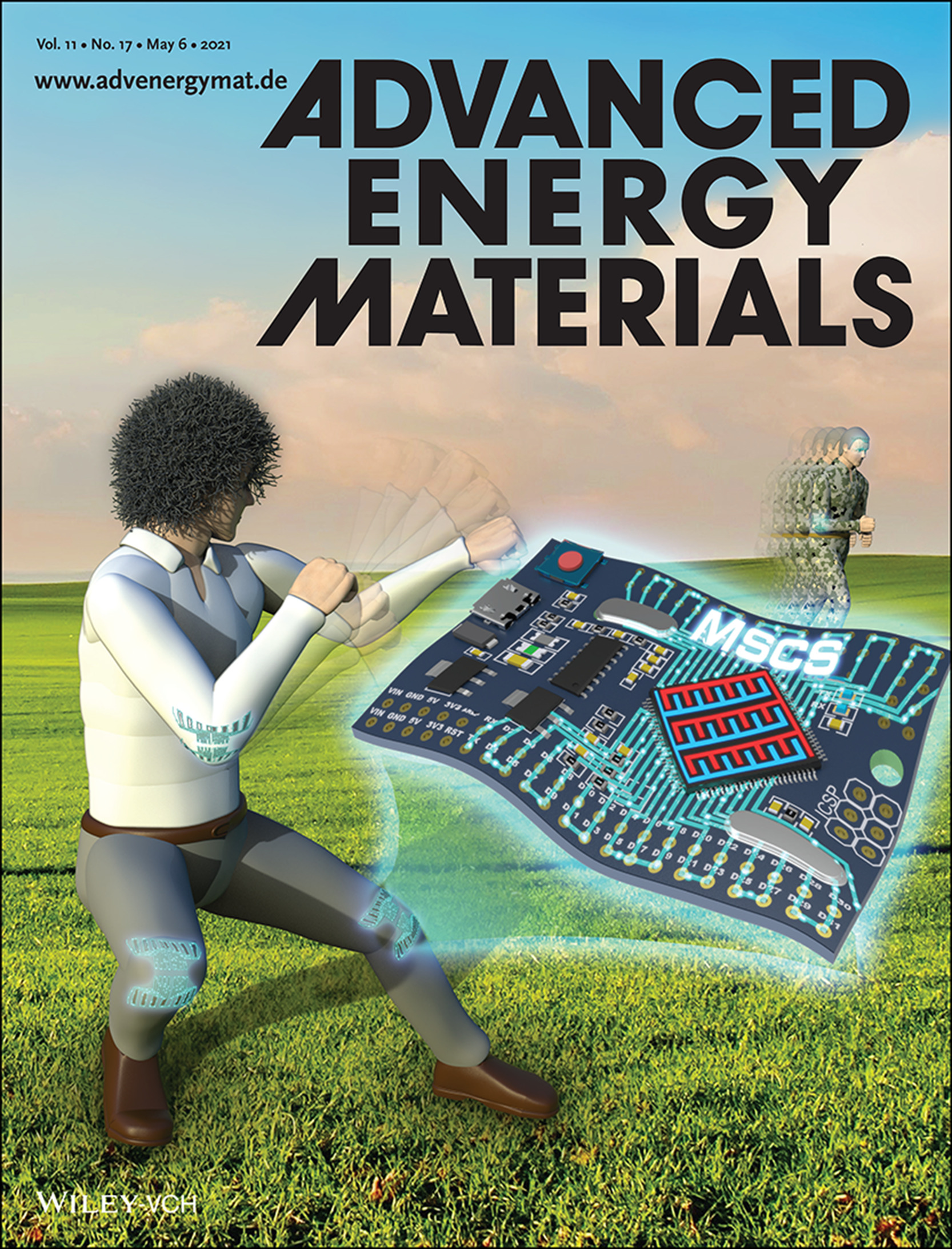Our paper entitled with “High-Voltage Potassium Ion Micro-Supercapacitors with Extraordinary Volumetric Energy Density for Wearable Pressure Sensor System” has been published online in high-impact journal Advanced Energy Materials. (IF=25.245). Many thanks to our cooperative scientists of Prof. Liu at DICP, CAS. Congratulation to Shuanghao!
The modularized and miniaturized electronics for portable and wearable devices have intensively accelerated the need for microscale electrochemical energy storage devices with robust performance and high integration. Among the miniaturized energy storage units, micro-supercapacitors (MSCs) hold a great potential for microelectronics, due to the ultrahigh power density, fast charge and discharge rate, and long life stability, but suffer from relatively low energy density and narrow potential window. To address this gap, hybrid ion MSCs (HIMSCs) have been emerging to cover the merits of both battery-type negative electrode and supercapacitor-type positive electrode, where high energy density and high power density can be simultaneously achieved. For instance, lithium ion MSCs as a typical kind of HIMSCs have demonstrated to possess high energy density and long cyclability. Nevertheless, the increasing cost and low crustal abundance of lithium will restrain the further development of lithium ion MSCs. In contrast, substantial efforts have been devoted into potassium ion energy storage devices owing to the abundant potassium resource, comparable reduction potential of potassium (−2.93 V vs SHE) with lithium. In addition, potassium ions in non-aqueous electrolyte have a weaker solvation effect and smaller Stokes’ radius than lithium ions, contributing to a higher ion transfer number and conductivity. Nevertheless, the rational design of KIMSCs remains unexplored so far.

Schematic of preparation of MXene-derived KTO nanorods and the fabrication of the integrated KIMSC-sensor system
To address this issue, our scientists Wu Zhong-Shuai reported a new prototype of high-performance KIMSCs based on MXene-derived KTO nanorods as negative electrode and porous activated graphene (AG) as positive electrode in a non-flammable high-voltage ionogel electrolyte, which served as a sufficient microscale power source for the construction of an integrated sensor system. The KTO nanorods were prepared from the simultaneous alkalization and oxidation of Ti3C2MXene via hydrothermal method. Impressively, the KTO delivered a considerable diffusion coefficient of 1.6 × 10-12 cm2s-1and high capacity of 145 mAh g-1as anode materials for K ion storage. The as-fabricated KIMSCs could offer a large operating voltage of 3.8 V, extraordinary volumetric energy density of 34.1 mWh cm-3, and mechanical robustness. Besides, a highly integrated system based on our KIMSC and a pressure sensor was well designed for efficiently monitoring the body movement of elbow and finger.
S.H. Zheng, J.X. Ma, K.X. Fang, S.W. Li, J.Q. Qin, Y.G. Li, J.M. Wang, L.Z. Zhang, F. Zhou, F.Y. Liu, K. Wang, Z.-S. Wu*. High-Voltage Potassium Ion Micro-Supercapacitors with Extraordinary Volumetric Energy Density for Wearable Pressure Sensor System. Adv. Energy Mater. 2021, DOI: 10.1002/aenm.202003835.
